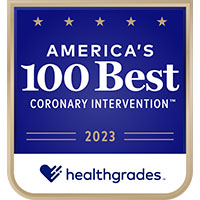Saint Vincent Hospital Nutrition Month Tips: Eating Right on a Budget
Mar 29, 2023WORCESTER, Mass. – Although National Nutrition Month is ending soon, we always want to eat healthy even while on a budget. Getting the most nutrition for your food budget starts with some extra planning before grocery shopping.
Here’s 10 budget friendly tips for eating right from the Academy of Nutrition and Dietetics, and our Regional Clinical Nutrition Manager (Morrison), Jennifer Larrivee MS, RDN, LDN:
- Cook More. Eat Out Less.
While eating out may be convenient, it can be expensive. Many foods can be prepared for less money, and more healthfully, at home. Find a few simple healthy recipes your family enjoys and save eating out for special occasions. - Plan Meals and Snacks.
Before shopping, plan meals and snacks, to save time and money. Create a grocery list based on recipe ingredients, after checking what you already have at home. When shopping with a list, you will be less likely to buy things that are not on it. - Make Extra Portions.
To save time in the kitchen for a later date, make a large batch by doubling a recipe. Extra portions can be used for lunches or meals later in the week or freeze as leftovers in individual containers. Buying in bulk is often less expensive. - Decide Where to Shop.
Check local stores for weekly sales and coupons, especially for more expensive ingredients like meat and seafood. While shopping, compare prices of different brands and sizes, to evaluate the lower unit price. - Buy Foods in Season.
Fresh fruits and vegetables that are in season are usually more available and may be less expensive. These options are typically highlighted in-store and may be on sale. - Portion Size Control.
Use smaller plates, bowls and glasses to help keep portions under control. Fill half your plate with fruits and vegetables, and the other half with grains and protein foods such as lean meat, poultry, seafood or beans. - Nutritious, Low-Cost Foods.
Some foods are less expensive than others. To make the most of your dollars, find recipes that use ingredients such as beans, peas, lentils, sweet or white potatoes, eggs, peanut butter, canned salmon, tuna or crabmeat, grains such as oats, brown rice, barley or quinoa, and frozen or canned fruits and vegetables. - Make Your Own.
The convenience of prepared foods costs money. Make your own snacks by purchasing large tubs of low-fat yogurt or cottage cheese to divide them into smaller containers. For trail mix, combine unsalted nuts, dried fruit and whole grain pretzels or cereal to store in smaller airtight containers. - Garden Fresh.
Starting a garden is an affordable way to eat more fruits and vegetables. Plants can be started from seed or purchased at a low price from your local garden center. Or visit one of the many local farmers market during warmer months. Locally grown fruits and vegetables are often available for less money than a grocery store. - Healthy Hydration.
Water from the tap is a low-cost way to stay hydrated. Drinking plain water instead of sweetened beverages not only saves money but may help reduce extra calories and added sugars.
Saint Vincent Hospital offers an outpatient nutrition clinic, with a doctor’s referral, to counsel patients with diabetes, heart disease and obesity, among other illnesses, on food choices based on their medical dietary needs. Contact Saint Vincent Hospital central scheduling center for an appointment at 508-363-9729.


 Saint Vincent Hospital is proud to be named One of America’s Best Coronary Intervention Hospitals for 2023 by Healthgrades! This distinction places us in the top 5% of hospitals nationwide for coronary intervention.
Saint Vincent Hospital is proud to be named One of America’s Best Coronary Intervention Hospitals for 2023 by Healthgrades! This distinction places us in the top 5% of hospitals nationwide for coronary intervention.